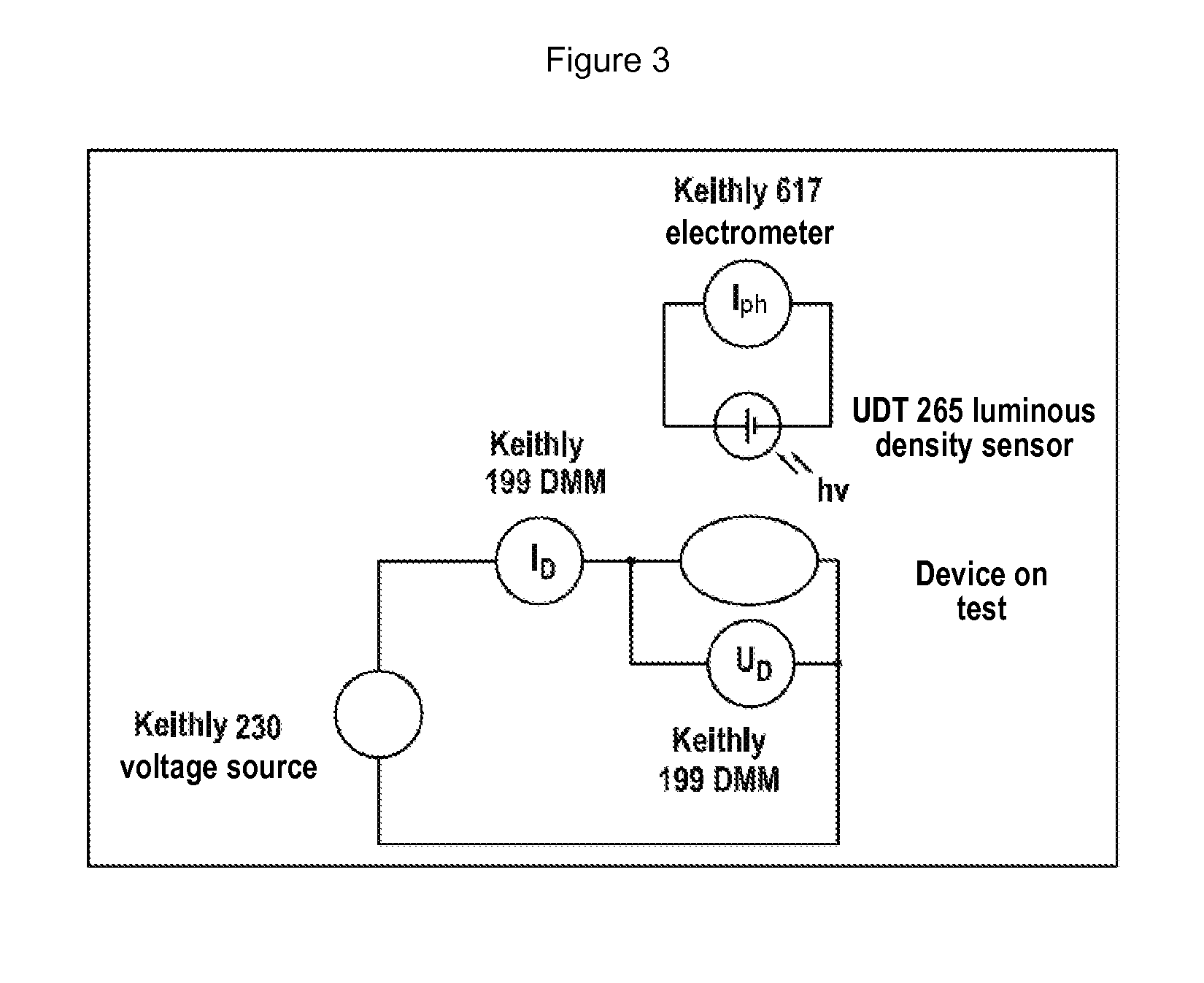Materials for organic electroluminescent devices
- Summary
- Abstract
- Description
- Claims
- Application Information
AI Technical Summary
Benefits of technology
Problems solved by technology
Method used
Image
Examples
working examples
[0163]The following syntheses are carried out, unless indicated otherwise, under a protective-gas atmosphere in dried solvents. Starting material 1 and the solvents are commercially available. Compound 5 can be prepared analogously to J. Org. Chem., 2004, 69, 6766-6771. Compounds 8 and 10 can be prepared analogously to Eur. J. Inorg. Chem., 2007, 3, 372-375.
examples 1 and 2
Preparation of monomers M1 and M2
Example 1
Preparation of Compound 9 (M1)
[0164]Compound 9 is prepared as follows:
1.1 Compound 2
[0165]
[0166]100.0 g (0.2 mol) of compound 1 are initially introduced in 500 ml of nitrobenzene. 35 ml (0.8 mol) of nitric acid in 90 ml of glacial acetic acid are added dropwise at room temperature, the mixture is subsequently stirred at −70° C. for a further 3 hours. The reaction mixture is then poured into 1250 ml of water and 2500 ml of ethanol. The precipitated solid is filtered off with suction, washed in ethanol and employed in the subsequent reaction without further purification. The yield is 98.0 g (0.19 mol, 90%).
1.2 Compound 3
[0167]
[0168]32.6 g (62.8 mmol) of compound 2 are initially introduced in 650 ml of methanol, and 1.3 g of palladium on active carbon is added. The reaction mixture is cooled to 0° C., and 5.2 g (138.5 mmol) of NaBH4 is added in portions. The reaction solution is stirred overnight at room temperature. When the reaction is comple...
example 2
Preparation of Compound 11 (M2)
[0177]Compound 11 is prepared as follows:
2.1 Compound 11
[0178]
[0179]50 ml of 2-ethoxyethanol are added to 0.61 g (0.80 mmol) of compound 10 and 1.0 g (1.59 mmol) of compound 7 under protective gas. The reaction mixture is heated to 115° C. and stirred at this temperature for 4 days. After cooling to room temperature, 100 ml of a mixture of methanol and water (10 / 1) are added to the batch. The precipitated solid is filtered off with suction and washed with methanol. The product is purified by means of column chromatography (silica gel; eluent: toluene / heptane 6 / 4). The yield is 0.48 g (0.39 mmol, 48%).
PUM
| Property | Measurement | Unit |
|---|---|---|
| Weight | aaaaa | aaaaa |
| Solution | aaaaa | aaaaa |
Abstract
Description
Claims
Application Information
 Login to View More
Login to View More - R&D Engineer
- R&D Manager
- IP Professional
- Industry Leading Data Capabilities
- Powerful AI technology
- Patent DNA Extraction
Browse by: Latest US Patents, China's latest patents, Technical Efficacy Thesaurus, Application Domain, Technology Topic, Popular Technical Reports.
© 2024 PatSnap. All rights reserved.Legal|Privacy policy|Modern Slavery Act Transparency Statement|Sitemap|About US| Contact US: help@patsnap.com










